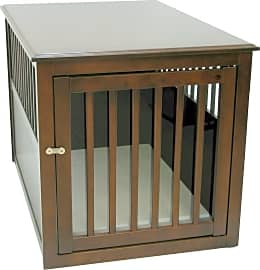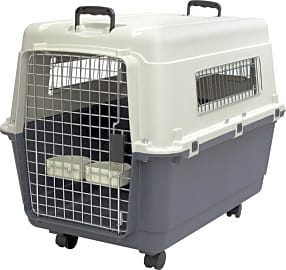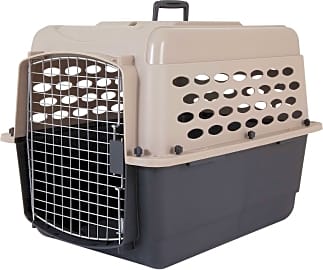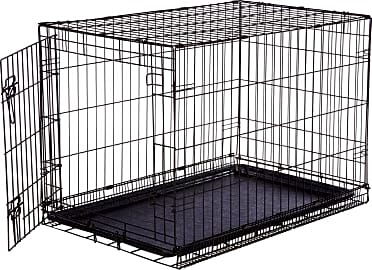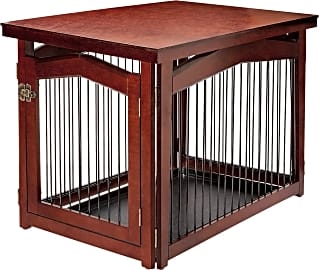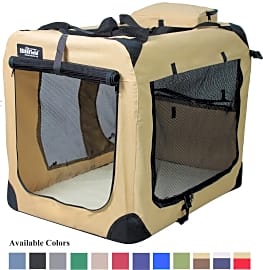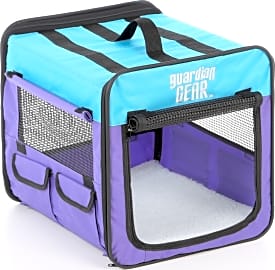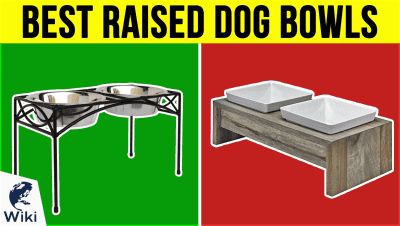The 10 Best Dog Crates

This wiki has been updated 41 times since it was first published in March of 2015. A good dog crate is versatile enough to act as both a comfortable home base for your furry best friend as well as a way to limit its mobility when you need to go somewhere. Great for training, transportation, and as a safe sleeping space, you can be sure your most precious cargo will be well taken care of inside any one of our selections, which range from the affordable to the high-end. When users buy our independently chosen editorial recommendations, we may earn commissions to help fund the Wiki.
Editor's Notes
February 14, 2020:
Crates are important for the training and well-being of most canines, and there are a few different types of them available. Wire crates are the most basic and generally the most common, because they're easy to put together, don't weigh a ton, and tend to be quite strong and reliable. The AmazonBasics Folding is about as simple as they come, while the MidWest Ultima Pro is a bit more costly, but is also a significant upgrade in terms of durability and small yet helpful features. The LuckUp Heavy Duty is configured similarly to a wire crate, though its thick steel bars are a significant departure from actual wire. It has the distinction of being the rare model with 3 doors: one on top, one on the side, and one inside the side door, intended for feeding purposes. Its main drawbacks are its high price and lack of portability.
Speaking of portability, there are several different types of travel crates to choose from as well. Soft-sided models like the Guardian Gear Collapsible and EliteField 3-Door are good for small dogs -- but not large breeds -- and may even be suitable for use as a carry-on when flying. When large dogs travel, the PetMate Vari and SportPet Designs Kennel should be able to accommodate them.
Then there are furniture-style crates. As evidenced by the companies mentioned in our Special Honors section, these can get very costly, and you should actually be wary of cheaping out when selecting one. The Casual Home Wooden, for example, looks nice and is suitable for small breeds, but extremely anxious pups and big dogs will likely damage it before too long. The Merry Pet 2-in-1 isn't exactly bulletproof, either, but its ability to fold out into a hallway gate makes it great for visiting family and friends whose houses may not be dog-proofed. If you're in the market for something that looks great and should stand up to Fido's antics for a reasonably long time, the Crown End Table is almost certainly the way to go, unless you're willing to spend $500 or more.
Special Honors
B&B Kustom Kennels With a motto of "Because wire crates are ugly," you can be certain that these folks make highly attractive pieces of furniture that also happen to store dogs safely and comfortably. You can also assume that you'll spend considerably more for one of these than you would on a wire crate, although it will surely be more aesthetically pleasing. bbkustomkennels.com
DenHaus Dens and Crates They manufacture a handful of interesting designs, including traditional end tables and considerably more modern round crates that will fit into nearly any decor. As with any such high-end cages, they're quite costly but they're also durable and offered with a variety of optional add-ons. denhaus.com
What Do I Need to Consider Before Purchasing a Dog Crate?
The other part of the reason is that your dog could drink all of that water, resulting in a crate that is ... all wet.
The first thing you need to consider before purchasing a dog crate is your dog's size. Any owner needs to be sure that a prospective crate will be long, high, and wide enough to accommodate the dog, particularly when that dog is lying down. This not only applies to the crate, but perhaps more importantly, the crate's entrance. You should also determine how much house space you're willing to devote to a crate. Otherwise, you could wind up purchasing a model that's too large.
If your dog is prone to spending time in more than one home, then you'll probably want a lightweight crate (e.g., 10-40 lbs) that is either collapsible, or made of fabric that you can fold. If your dog is big, you'll want a crate to have a weighted base, the kind that prevents your dog from tipping the crate over if he or she happens to be flailing around from side to side.
Certain dog crates feature a wooden trim, which is nice, but could present a problem if your dog has a tendency to scratch or claw. Regardless of what type of crate you own, any water bowl that you place inside should be made of metal, as opposed to plastic. A lot of crated dogs are inclined to treat a plastic bowl as if it were a toy, which is part of the reason you don't want to overfill any bowl that you place inside a crate. The other part of the reason is that your dog could drink all of that water, resulting in a crate that is ... all wet.
It's worth mentioning that the majority of fabric crates (e.g., nylon, mesh, polyester, etc.) have been designed with smaller dogs in mind. Buying a fabric crate for a 60-lb dog can - and probably will - result in a lot more headaches than it's worth.
How to Help Your Dog Embrace Its Crate
Long-term, you want a dog to look at his or her crate as being less of a cage and more of a home. The first step to creating that type of atmosphere involves lining the crate with a layer of cushion and a blanket. Assuming the crate has a hard surface, adding a cushion should keep the dog from feeling like he is being made to lie on a flat slab. Laying a blanket down can provide a sense of security, especially if that blanket is one that the dog already loves.
Most dogs are suspicious of entering a crate for the first time. Crates are small and confining, which is why you may need to lure your dog into the crate with the promise of a treat. The key is not to give your dog the treat until he is completely inside. Hopefully, you'll only need to do to this a handful of times. In addition, you may want to spend some time with your dog while he is lying in the crate with the door open. Petting your dog in this environment reinforces the idea that you are not punishing the dog, or banishing him to the crate alone.
Obviously, you'd like for your dog to sleep while he's in the crate, or, at the very least, to refrain from constant barking. With that in mind, it might be worth taking the dog for a walk or playing with him just prior to placing him inside the crate. Fifteen minutes worth of activity might go a long way to ensuring your dog feels exhausted.
Finally, you may want to put a dog toy and a metal water bowl in the dog's crate to make the atmosphere seem more congenial. You may also want to put a cover (i.e., a blanket) over the top of the crate if it happens to be placed inside a sunlit room.
A Brief History of the Dog Crate
While it's probable that rudimentary dog crates have been around for centuries, the first official patent for one of these crates was awarded to an Ohio man named John Porterfield in 1902. Porterfield's carrier was built with wood, and it featured small windows, a handle, and a collapsible frame.
What's more, the American public had really come to embrace the idea of owning - or building - a more traditional dog house.
In 1924, a Missouri inventor named Dwight McBride improved upon Porterfield's original design by adding a series of metal bars along one side of the crate. These bars provided the dog with a wide-open window, and they also functioned as the crate's primary door.
Up and through the 1950s, dog crates were still considered a specialty item, something used by SPCAs and kennels, or private owners who were transporting their dogs inside a car, a plane, or a boat. The majority of consumers made little distinction between a dog crate and a dog carrier. What's more, the American public had really come to embrace the idea of owning - or building - a more traditional dog house.
During the 1980s, manufacturers began to shift from advertising these products as "cages" to advertising them as crates. Soon after, the pet-owning public caught on. Having a crate meant dogs would no longer be hopping over fences or chewing up the furniture while their owners were at work. It also meant that dogs might not have to spend their daylight hours with a boarder.
Today, indoor crates are more popular than they have ever been. Crates have effectively supplanted the dog house in a number of areas, while making it more feasible for people who aren't always home to own a dog.


